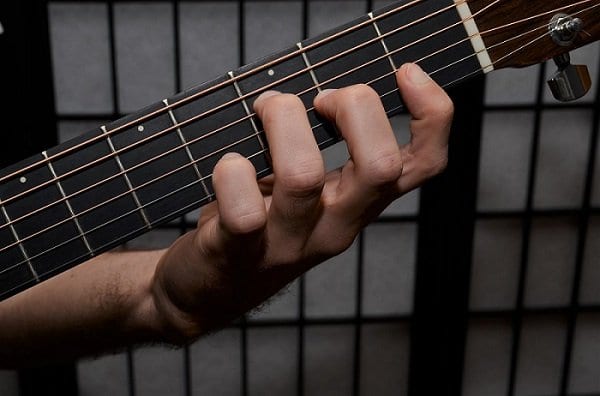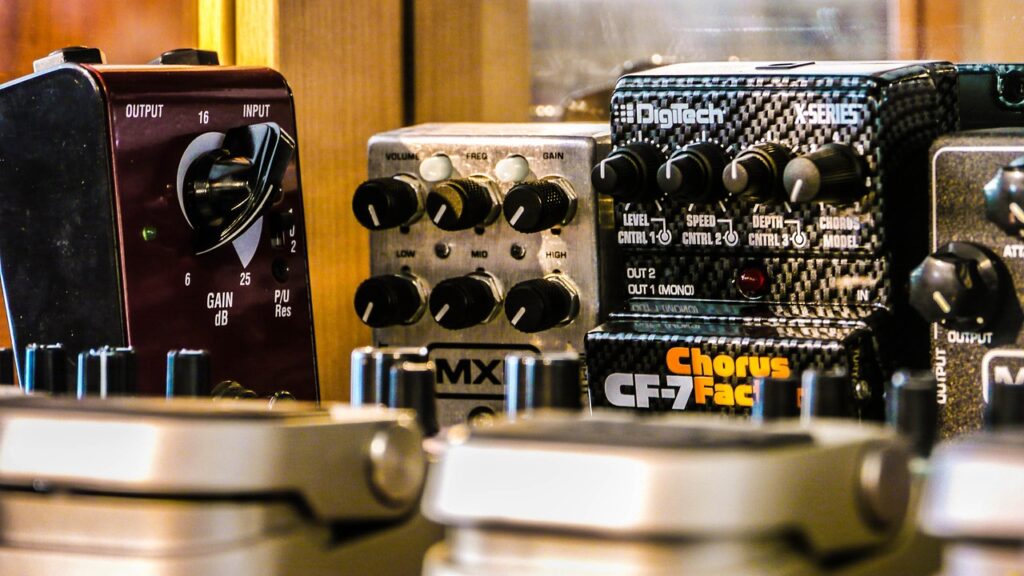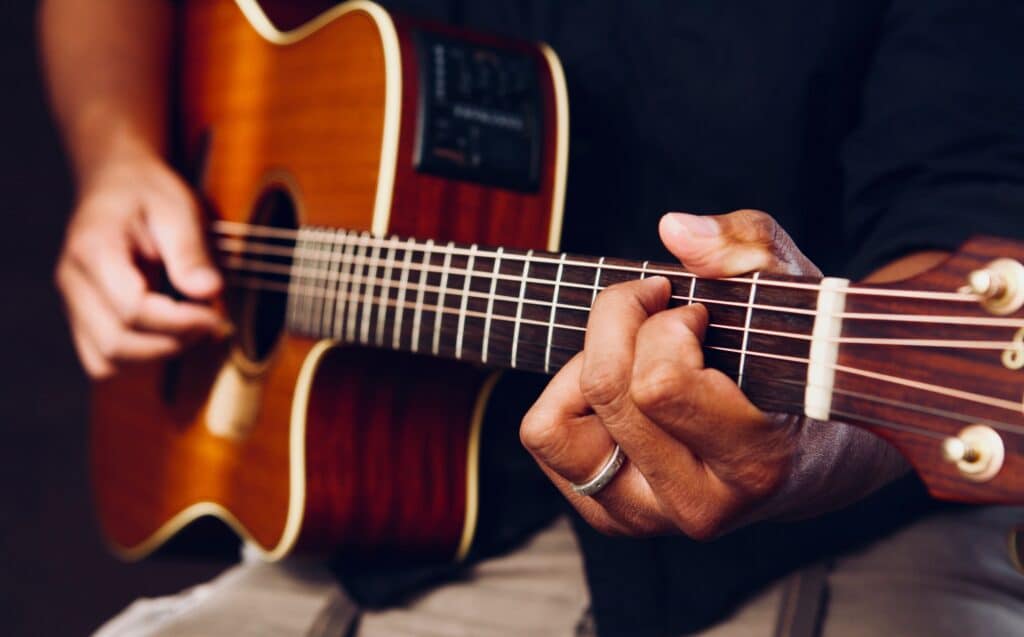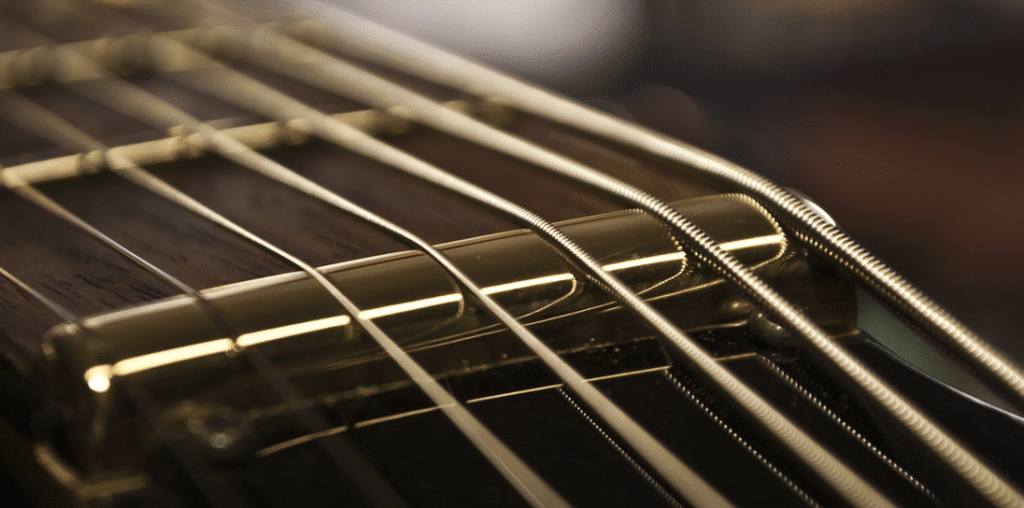It can be intimidating that there are so many different types of guitars out there! Especially when you’re first beginning, it’s hard to know where to start. It’s not as simple as acoustic vs. electric; each kind has many variations and innovations.
The best way to get to know a guitar is to play it! When you’re picking out a guitar, go to your local guitar shop and play as many guitars as possible. This will give you a feel of what you like and dislike.
Guitars are in all genres of music and permeate throughout our culture. They have made history in their popularity and significance. Once you have that basis, you can start narrowing down your options and pick the perfect guitar for you!
Guitars Worth Knowing About
Variations of the modern-day guitar can be traced back over 4,000 years. The “vihuela” is a medieval instrument that is most similar to the modern guitar and evolved from the lute.
Guitars became popular with the coming of the blues. Blues transitioned into classic rock, ushering in artists like The Beatles, Bob Dylan, and Led Zeppelin.
Acoustic guitars
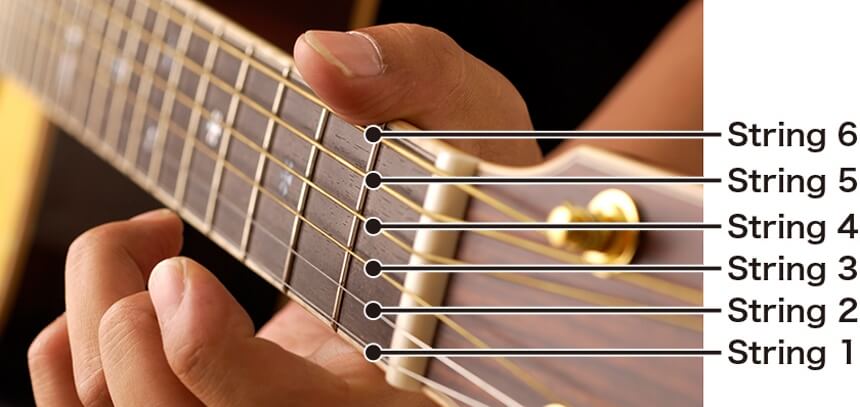 An
acoustic guitar
Trusted Source
Guitar 101: What Is an Acoustic Guitar? Learn About Acoustic Guitars and Tips for Playing Guitar
The guitar is equally at home in a classical concerto, a jazz improvisation, or a punk rock anthem. And while the electric guitar suits many genres, its older cousin—the acoustic guitar—offers the greatest versatility.
www.masterclass.com
works by using frets to change the length of a string’s vibrations to make the sound higher or lower. The shorter the string is made, the higher it sounds. The strings vibrate through a hollow chamber in the guitar’s body.
An
acoustic guitar
Trusted Source
Guitar 101: What Is an Acoustic Guitar? Learn About Acoustic Guitars and Tips for Playing Guitar
The guitar is equally at home in a classical concerto, a jazz improvisation, or a punk rock anthem. And while the electric guitar suits many genres, its older cousin—the acoustic guitar—offers the greatest versatility.
www.masterclass.com
works by using frets to change the length of a string’s vibrations to make the sound higher or lower. The shorter the string is made, the higher it sounds. The strings vibrate through a hollow chamber in the guitar’s body.
Acoustic guitars often have metal strings made of bronze, phosphor bronze, brass, nickel, silk, or steel. Each material creates a different sound. An acoustic guitar with silk strings is called a Classical guitar with a softer sound.
Acoustic guitars with steel strings are most commonly used for rock, folk, country, and bluegrass music. There are different shapes of acoustic guitars, including Range, Parlor, Grand Concert, Auditorium, Dreadnought, and Jumbo. Dreadnaught guitars are the most popular shape.
Acoustic guitars can range from $100 to thousands of dollars. However, you don’t have to break the bank to have an amazing guitar. This guide will help you narrow down the best acoustic guitars on a budget.
Common guitar brands include Gibson, Martin, and Ibanez. This is a good example of what an Ibanez guitar can offer.
Electric guitars
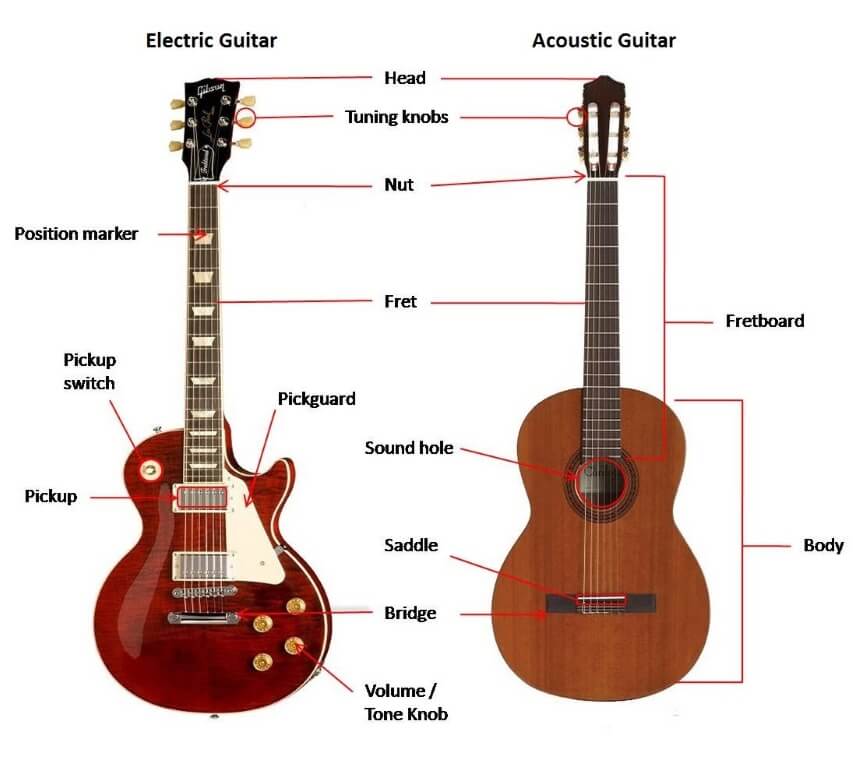 Electric guitars and acoustic guitars share much in common, but the electric guitar is still unique in many ways. Electric guitars are solid-body guitars, meaning they don’t have a sound hole. To replace the sound hole, they have magnetic pickups that transmit the vibrations of the metal strings into an amp.
Electric guitars and acoustic guitars share much in common, but the electric guitar is still unique in many ways. Electric guitars are solid-body guitars, meaning they don’t have a sound hole. To replace the sound hole, they have magnetic pickups that transmit the vibrations of the metal strings into an amp.
Electric guitars also have knobs that control the volume and tone of the sound. There is also sometimes a “pickup selector” that can alter the tone even more. This guitar has two simple knobs and is great for beginner or intermediate players.
Electric guitars are often used for rock, metal, and blues. Different electric guitars will fit the sound of the genre better than others. If you’re interested in playing blues, it’s important to choose a guitar that is the best at playing blues.
The prices of electric guitars are similar to those of acoustic guitars, but you will also need an amp, which will probably make your overall setup more expensive. You don’t have to spend a lot; getting an amazing electric guitar for less than $1000 is possible.
Electro-acoustic guitars
 Electro-acoustic guitars, also known as acoustic-electric guitars, are acoustic guitars that include a magnetic pickup or a microphone. They are useful when the player wants the sound of an acoustic guitar but needs more volume, such as when performing live.
Electro-acoustic guitars, also known as acoustic-electric guitars, are acoustic guitars that include a magnetic pickup or a microphone. They are useful when the player wants the sound of an acoustic guitar but needs more volume, such as when performing live.
They evolved because as musicians started playing live with their bands, the guitar sound was often lost behind the loud drums.
Electro-acoustic guitars often have volume and tone toggles built-in, and some have a tuner built-in as well. They’re a great option if you want versatility and the opportunity to play live.
Twelve-string guitars
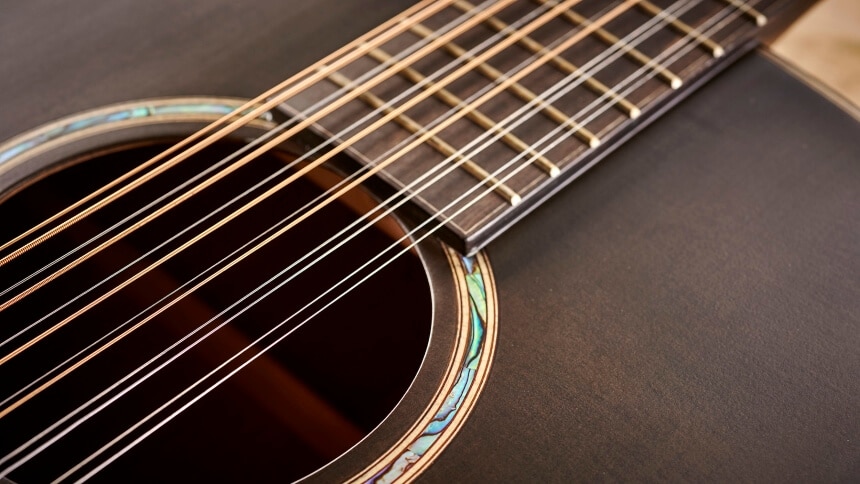 While most guitars have six strings, twelve-string guitars have some physical accommodations to compensate for the extra strings. The head is larger, and the fretboard is wider. The strings are in pairs, and each pair is fretted as if they were a single string.
While most guitars have six strings, twelve-string guitars have some physical accommodations to compensate for the extra strings. The head is larger, and the fretboard is wider. The strings are in pairs, and each pair is fretted as if they were a single string.
The high E and B strings are tuned to the same octave. The other four pairs are tuned in octaves, meaning that although they’re the same note, one will be much higher than the other one.
Double the strings mean double the opportunity for the player to be imaginative! The twelve-string opens up a whole new dimension to play with.
Archtop guitars
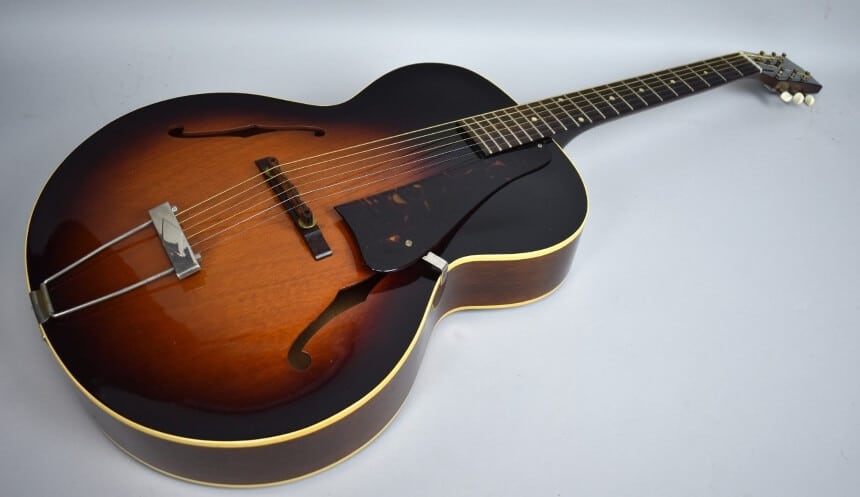 Archtop guitars are most popular for jazz musicians. They are usually semi-acoustic guitars with arched tops and hollow bodies. They also have “f-holes” on both sides of the guitar’s strings to help project sound.
Archtop guitars are most popular for jazz musicians. They are usually semi-acoustic guitars with arched tops and hollow bodies. They also have “f-holes” on both sides of the guitar’s strings to help project sound.
Jazz debuted in the 1920s, but the archtop guitar was developed before that. The first patent for an archtop guitar was filed by Orville Gibson in 1898. The Gibson Guitar Corporation started producing archtops with f-holes in 1922.
Archtop guitars have a bigger body and a distinct tone and are aesthetically pleasing! However, they are highly susceptible to feedback. They also aren’t very versatile.
Steel guitars
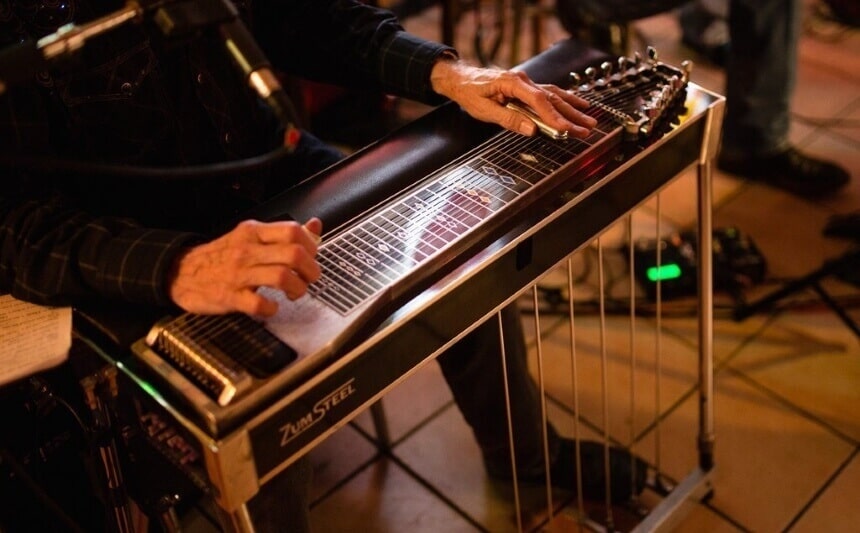 A steel guitar is played by moving a steel bar (or any hard object) against plucked strings. The bar is called a “steel,” which is where the name “steel guitar” came from.
A steel guitar is played by moving a steel bar (or any hard object) against plucked strings. The bar is called a “steel,” which is where the name “steel guitar” came from.
Steel guitars can be traced back to early African instruments. The modern steel guitar was made popular in Hawaii. The technique was developed around 1890
Steel guitars became popular in the early 1900s, inspiring Western swing, honky-tonk, gospel, and bluegrass.
There are two distinct ways to play a steel guitar. Lap-style is played on an instrument that is designed to sit on the player’s lap. Bottleneck-style is played on a Spanish guitar held against the body.
Bottleneck style is mostly used in blues and rock, while lap style is more versatile and associated with Hawaiian music, country music, Western swing, honky-tonk, bluegrass, and gospel.
Touch guitars
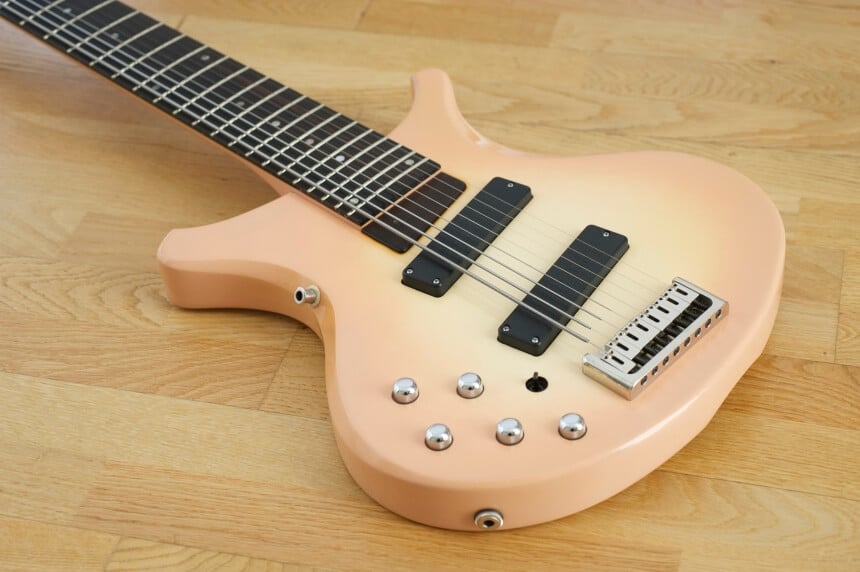 Touch guitars are guitars or guitar-like instruments that utilize a fretboard-tapping playing style. They are touched or tapped to create the note instead of strummed.
Touch guitars are guitars or guitar-like instruments that utilize a fretboard-tapping playing style. They are touched or tapped to create the note instead of strummed.
The earliest known guitarist using this technique was Jimmy Webster in the 1950s. Playing guitar this way is similar to playing a keyboard instrument because you can play chords and solos at the same time.
The touch technique works best on guitars with low-action strings, which are very close to the fretboard. If the technique is tried on normal-action strings, there is too much distance to cover, and the sound will be weak and hollow.
It is extra important to keep new and clean strings while using the touch technique because of the delicacy of the technique. Any dirt on the strings will take away from the ease of the playing and the sound produced.
Touch guitars are special because you can use both hands on the frets instead of just one. This opens up a whole new realm of possibilities.
Resonator guitars
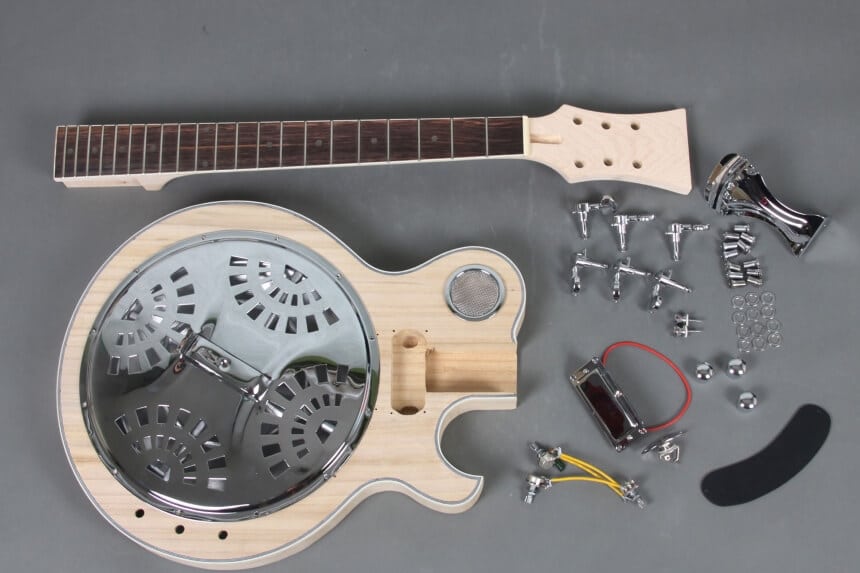 Resonator guitars are acoustic guitars that make sound by sending vibrations to spun metal cones called resonators. They were originally designed to be louder than regular acoustic guitars, which were often drowned out by other instruments while playing in a band.
Resonator guitars are acoustic guitars that make sound by sending vibrations to spun metal cones called resonators. They were originally designed to be louder than regular acoustic guitars, which were often drowned out by other instruments while playing in a band.
However, they were soon recognized for their unique tone and became prized within bluegrass and blues music.
Resonator guitars have two styles. Square-necked guitars are played in lap steel guitar position. Round-necked guitars are played in a conventional position.
There are three main designs. The tritone has three metal cones. The single-cone “biscuit” has one cone. The Dobro brand developed the spider bridge design.
The body of resonator guitars can be made of either wood or metal.
Bass guitars
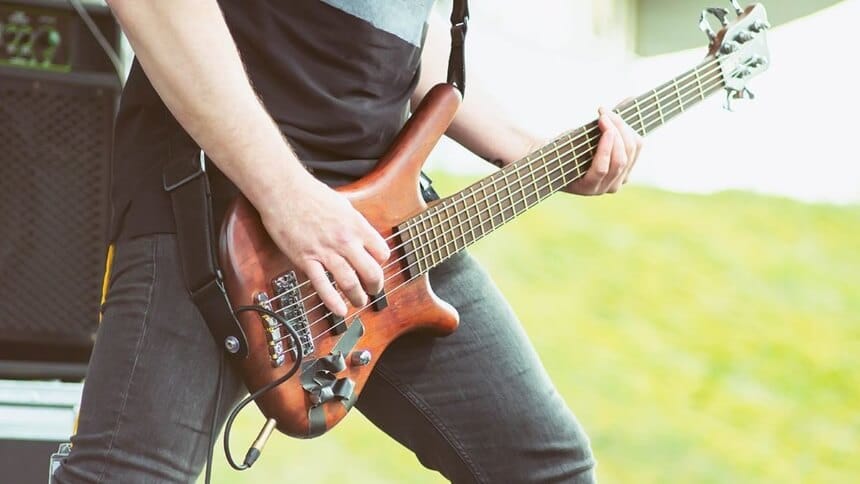 Bass guitars typically have four strings and are used to create the basslines in songs. Their four strings mimic the first four strings of regular guitars but are an octave lower. The upright bass is an acoustic version of a bass guitar and was widely replaced by the electric bass guitar in the 1960s.
Bass guitars typically have four strings and are used to create the basslines in songs. Their four strings mimic the first four strings of regular guitars but are an octave lower. The upright bass is an acoustic version of a bass guitar and was widely replaced by the electric bass guitar in the 1960s.
Along with four-string basses, there are also five and six-string basses. The five-string bass has a lower B string, while the six-string bass has a lower B string and a higher C string. Six-string basses are great for solo acts.
Bass guitars are a highly underestimated instrument. The bassline can make or break a song and is often the part of a song that gets stuck in your head.
Final thoughts
Who knew there was so much to know about all the different types of guitars? Guitars have a fascinating history, one that reaches back into ancient times. And they have come a long way since then.
Between acoustic guitars, electric guitars, electro-acoustic guitars, twelve-string guitars, archtop guitars, steel guitars, touch guitars, resonator guitars, and bass guitars, there really is a guitar out there for everyone!
It’s impossible to turn the radio on without hearing a guitar. They are the most popular instrument today and often the first one someone learns to play. They bridge the gap between all genres. Guitars are as versatile as can be.
It’s impossible not to fall in love with the sound of guitars. Now that you know all there is to know, go fall in love with playing one!











